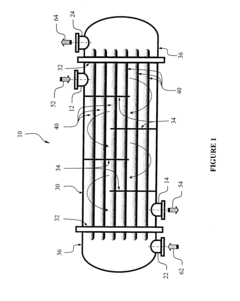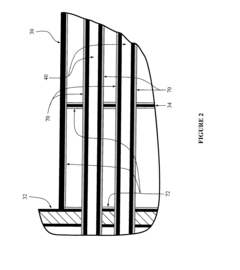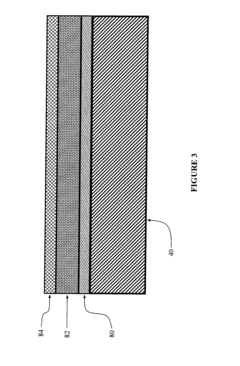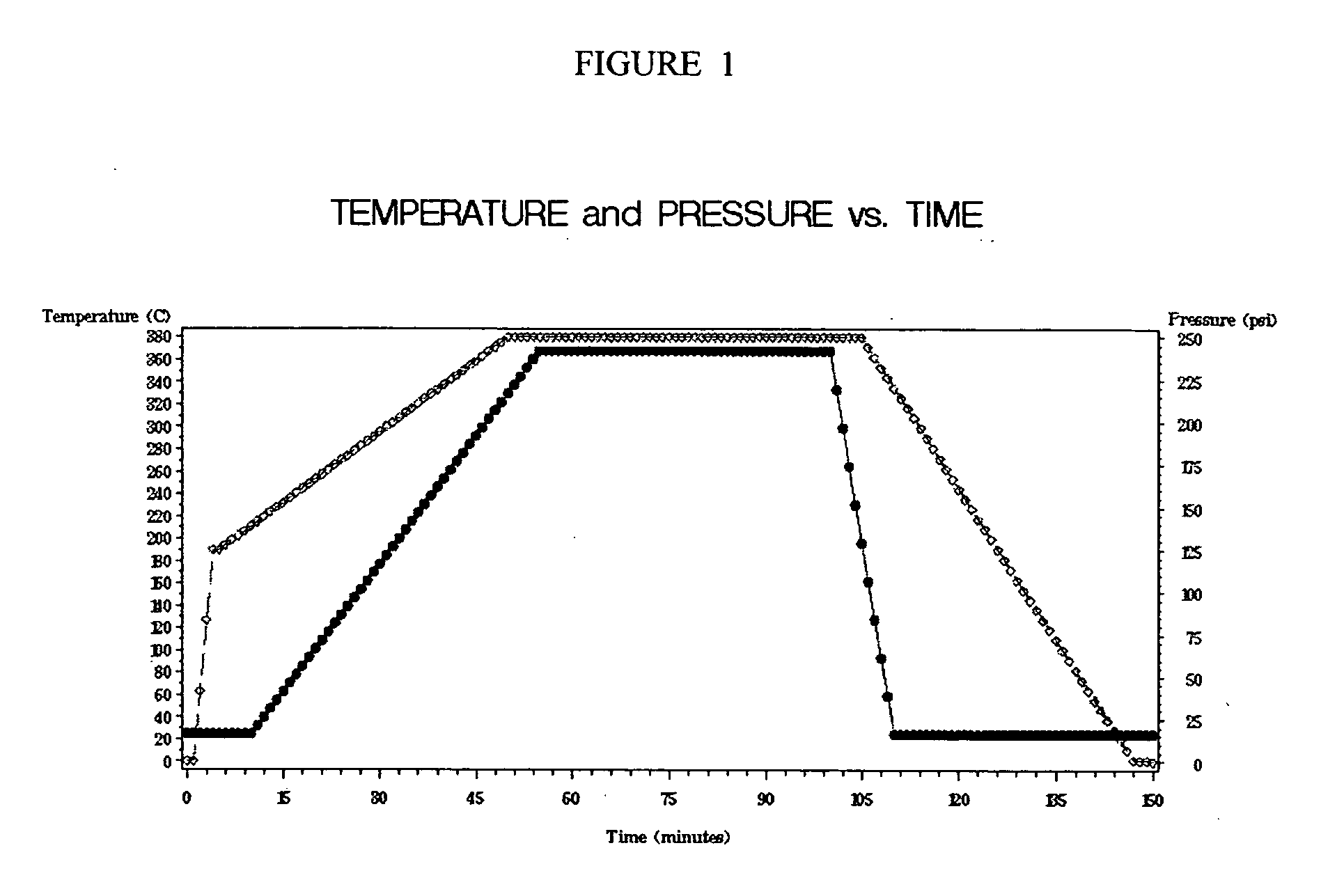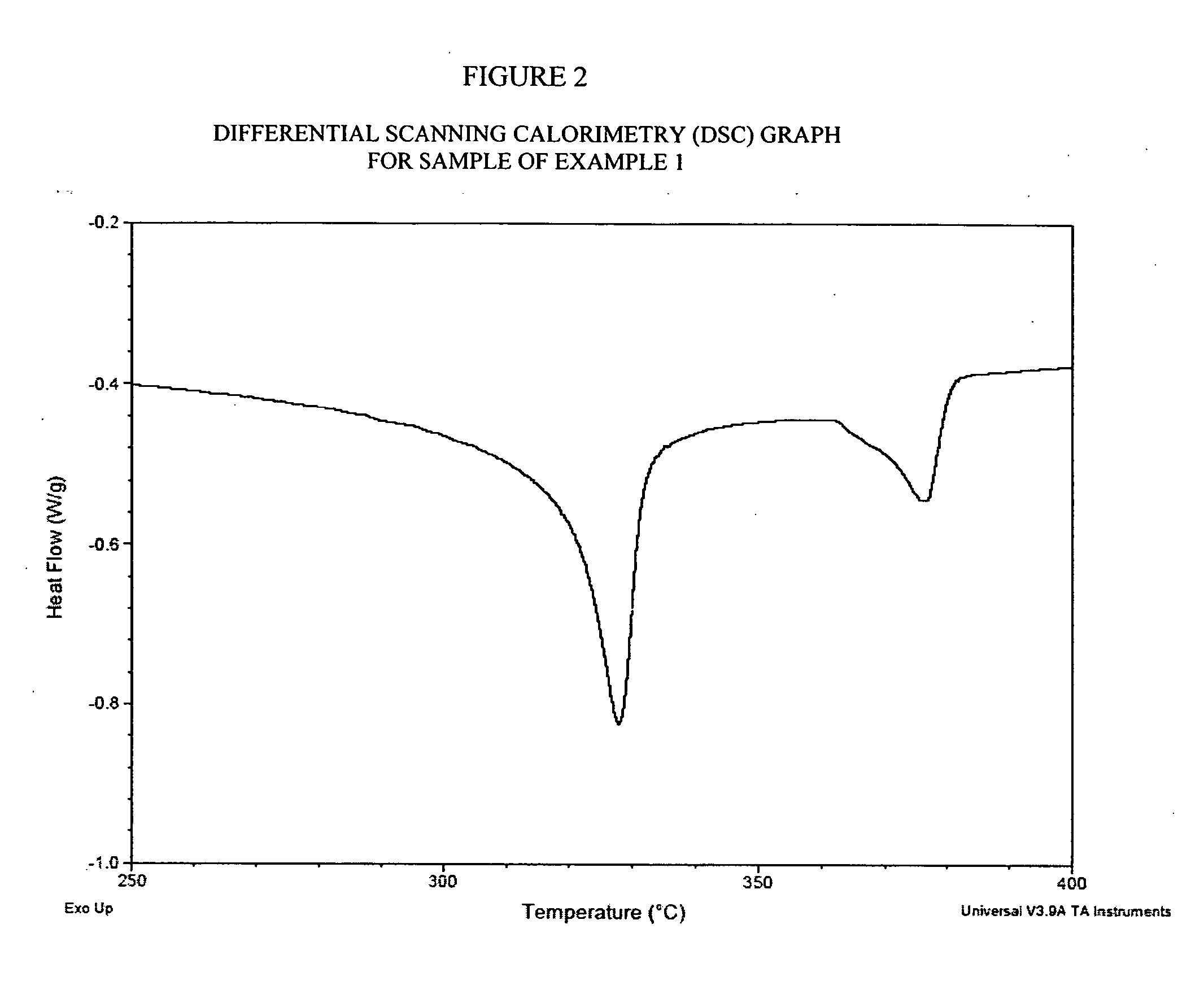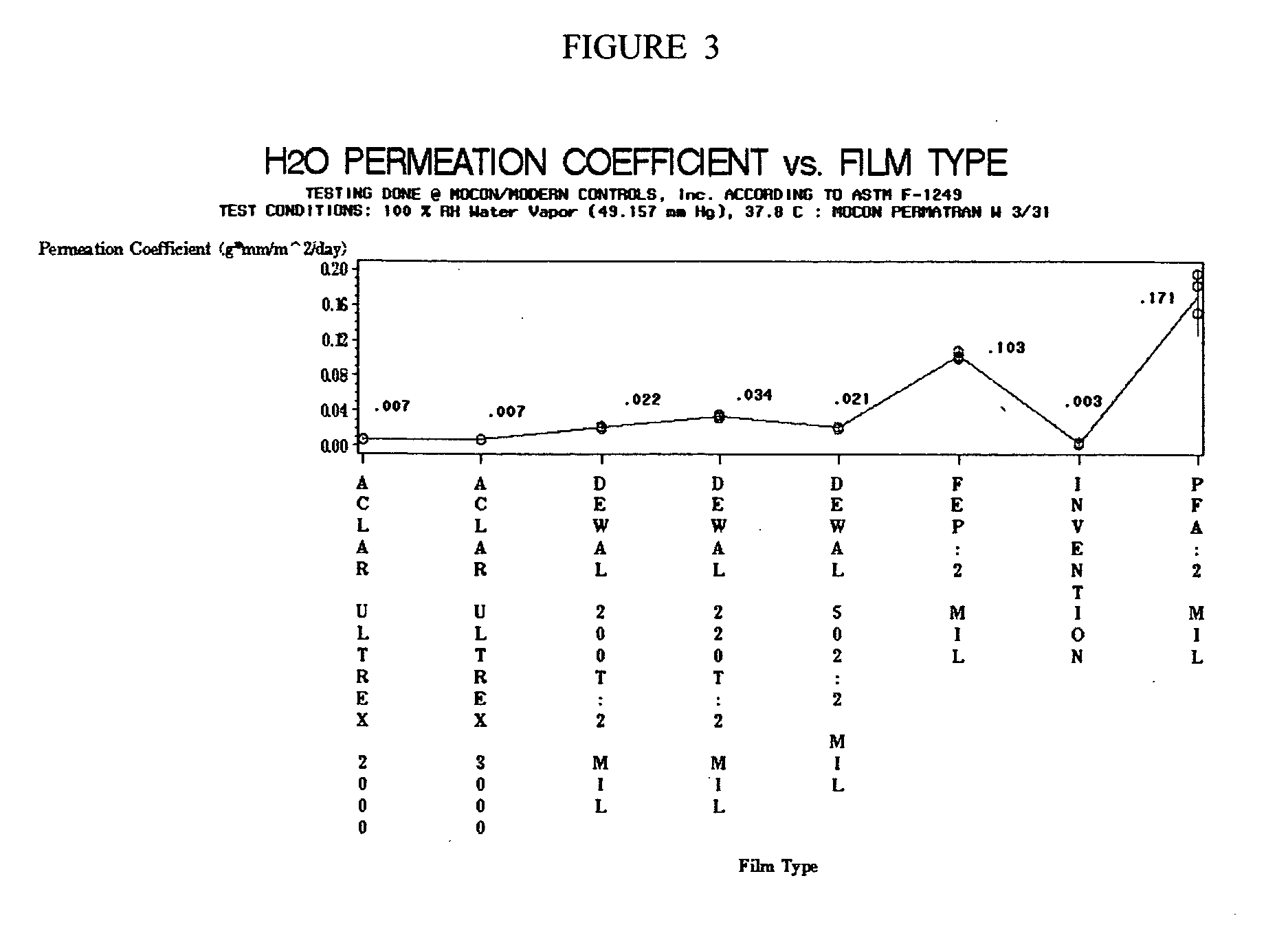How to Use PTFE Effectively in Corrosive Environments?
JUN 27, 20258 MIN READ
Generate Your Research Report Instantly with AI Agent
Patsnap Eureka helps you evaluate technical feasibility & market potential.
PTFE in Corrosion: Background and Objectives
Polytetrafluoroethylene (PTFE), commonly known as Teflon, has been a revolutionary material in the field of corrosion resistance since its accidental discovery by Roy Plunkett in 1938. This synthetic fluoropolymer has gained significant attention due to its exceptional chemical inertness, high thermal stability, and low friction properties. The evolution of PTFE technology has been driven by the increasing demand for materials capable of withstanding harsh corrosive environments across various industries.
The primary objective of utilizing PTFE in corrosive environments is to provide long-lasting protection to equipment and structures, thereby reducing maintenance costs and improving operational efficiency. As industries continue to push the boundaries of chemical processing, oil and gas extraction, and semiconductor manufacturing, the need for advanced corrosion-resistant materials has become more critical than ever.
PTFE's unique molecular structure, consisting of a carbon backbone fully surrounded by fluorine atoms, grants it remarkable resistance to a wide range of chemicals, acids, and solvents. This characteristic has positioned PTFE as a preferred material for applications involving aggressive corrosive media, where traditional materials such as metals and other polymers would rapidly degrade.
The development of PTFE technology has seen significant advancements over the years, including the creation of modified PTFE grades with enhanced mechanical properties and the incorporation of PTFE into composite materials. These innovations have expanded the application scope of PTFE, allowing it to be used in more demanding environments and under higher stress conditions.
Recent technological trends in PTFE application for corrosion resistance include the development of nano-enhanced PTFE coatings, which offer improved adhesion and durability, and the exploration of PTFE-based membranes for corrosion protection in extreme pH environments. Additionally, researchers are investigating the potential of PTFE in advanced barrier systems for nuclear waste containment and in the protection of next-generation energy storage devices.
As we look towards the future, the effective use of PTFE in corrosive environments will likely involve addressing key challenges such as improving its wear resistance, enhancing its bonding capabilities with other materials, and developing more environmentally friendly production methods. The ongoing research in these areas aims to unlock new possibilities for PTFE applications, further cementing its role as a crucial material in the fight against corrosion across various industrial sectors.
The primary objective of utilizing PTFE in corrosive environments is to provide long-lasting protection to equipment and structures, thereby reducing maintenance costs and improving operational efficiency. As industries continue to push the boundaries of chemical processing, oil and gas extraction, and semiconductor manufacturing, the need for advanced corrosion-resistant materials has become more critical than ever.
PTFE's unique molecular structure, consisting of a carbon backbone fully surrounded by fluorine atoms, grants it remarkable resistance to a wide range of chemicals, acids, and solvents. This characteristic has positioned PTFE as a preferred material for applications involving aggressive corrosive media, where traditional materials such as metals and other polymers would rapidly degrade.
The development of PTFE technology has seen significant advancements over the years, including the creation of modified PTFE grades with enhanced mechanical properties and the incorporation of PTFE into composite materials. These innovations have expanded the application scope of PTFE, allowing it to be used in more demanding environments and under higher stress conditions.
Recent technological trends in PTFE application for corrosion resistance include the development of nano-enhanced PTFE coatings, which offer improved adhesion and durability, and the exploration of PTFE-based membranes for corrosion protection in extreme pH environments. Additionally, researchers are investigating the potential of PTFE in advanced barrier systems for nuclear waste containment and in the protection of next-generation energy storage devices.
As we look towards the future, the effective use of PTFE in corrosive environments will likely involve addressing key challenges such as improving its wear resistance, enhancing its bonding capabilities with other materials, and developing more environmentally friendly production methods. The ongoing research in these areas aims to unlock new possibilities for PTFE applications, further cementing its role as a crucial material in the fight against corrosion across various industrial sectors.
Market Analysis for PTFE in Corrosive Applications
The global market for PTFE in corrosive applications has been experiencing steady growth, driven by increasing demand across various industries such as chemical processing, oil and gas, pharmaceuticals, and electronics. The unique properties of PTFE, including its exceptional chemical resistance, low friction coefficient, and high temperature stability, make it an ideal material for use in harsh corrosive environments.
In the chemical processing industry, PTFE is widely used for lining tanks, pipes, and valves that are exposed to aggressive chemicals. The market demand in this sector is expected to grow as manufacturers seek to improve the longevity and reliability of their equipment. The oil and gas industry also represents a significant market for PTFE, particularly in offshore applications where corrosion resistance is critical.
The pharmaceutical sector is another key driver of PTFE demand in corrosive applications. As stringent regulations require higher purity levels in drug manufacturing processes, PTFE's non-reactive nature and resistance to a wide range of chemicals make it an essential material for various components and equipment.
In the electronics industry, PTFE finds applications in the production of printed circuit boards and semiconductor manufacturing equipment, where its resistance to corrosive chemicals and high temperatures is invaluable. The growing complexity of electronic devices and the need for miniaturization are expected to further boost the demand for PTFE in this sector.
The Asia-Pacific region is anticipated to be the fastest-growing market for PTFE in corrosive applications, driven by rapid industrialization and increasing investments in chemical and petrochemical industries. North America and Europe remain significant markets, with a focus on high-performance applications and technological advancements.
Key market trends include the development of modified PTFE grades with enhanced properties, such as improved wear resistance and lower permeability. These innovations are expanding the potential applications of PTFE in corrosive environments and opening up new market opportunities.
Despite its advantages, the PTFE market faces challenges such as the high cost of raw materials and environmental concerns related to the production process. However, ongoing research into more sustainable manufacturing methods and the development of recycling technologies are expected to address these issues and support long-term market growth.
In the chemical processing industry, PTFE is widely used for lining tanks, pipes, and valves that are exposed to aggressive chemicals. The market demand in this sector is expected to grow as manufacturers seek to improve the longevity and reliability of their equipment. The oil and gas industry also represents a significant market for PTFE, particularly in offshore applications where corrosion resistance is critical.
The pharmaceutical sector is another key driver of PTFE demand in corrosive applications. As stringent regulations require higher purity levels in drug manufacturing processes, PTFE's non-reactive nature and resistance to a wide range of chemicals make it an essential material for various components and equipment.
In the electronics industry, PTFE finds applications in the production of printed circuit boards and semiconductor manufacturing equipment, where its resistance to corrosive chemicals and high temperatures is invaluable. The growing complexity of electronic devices and the need for miniaturization are expected to further boost the demand for PTFE in this sector.
The Asia-Pacific region is anticipated to be the fastest-growing market for PTFE in corrosive applications, driven by rapid industrialization and increasing investments in chemical and petrochemical industries. North America and Europe remain significant markets, with a focus on high-performance applications and technological advancements.
Key market trends include the development of modified PTFE grades with enhanced properties, such as improved wear resistance and lower permeability. These innovations are expanding the potential applications of PTFE in corrosive environments and opening up new market opportunities.
Despite its advantages, the PTFE market faces challenges such as the high cost of raw materials and environmental concerns related to the production process. However, ongoing research into more sustainable manufacturing methods and the development of recycling technologies are expected to address these issues and support long-term market growth.
PTFE Technology: Current Status and Challenges
Polytetrafluoroethylene (PTFE) has emerged as a crucial material in corrosion-resistant applications due to its exceptional chemical inertness and thermal stability. However, the effective use of PTFE in corrosive environments presents several challenges that researchers and industry professionals are actively addressing.
One of the primary challenges is the inherent non-stick property of PTFE, which, while beneficial in many applications, can lead to poor adhesion to substrates in corrosive settings. This limitation has prompted the development of surface modification techniques, such as plasma treatment and chemical etching, to enhance PTFE's bonding capabilities without compromising its corrosion resistance.
Another significant hurdle is the relatively low mechanical strength of PTFE, particularly at elevated temperatures. This weakness can result in deformation or failure under high-stress conditions in corrosive environments. To overcome this, researchers are exploring composite materials that incorporate PTFE with reinforcing agents like glass fibers or carbon nanotubes, aiming to improve mechanical properties while maintaining chemical resistance.
Permeation resistance is a critical factor in corrosive environments, and while PTFE exhibits excellent barrier properties, it is not entirely impermeable. The development of multi-layer PTFE structures and the incorporation of nanoparticles are current areas of research focused on enhancing the material's impermeability to corrosive substances.
The processing and fabrication of PTFE components for corrosive applications also present challenges. Traditional manufacturing methods often struggle to produce complex shapes or thin-walled structures without compromising the material's properties. Advanced techniques such as 3D printing and electrospinning are being investigated to overcome these limitations and expand the range of possible PTFE applications in corrosive settings.
Long-term durability and performance prediction of PTFE in diverse corrosive environments remain areas of ongoing research. The development of accelerated testing methods and predictive models is crucial for understanding how PTFE behaves over extended periods in various corrosive media, enabling more accurate lifecycle assessments and maintenance planning.
Lastly, the environmental impact and end-of-life considerations for PTFE products used in corrosive environments are gaining attention. Research into recycling methods and the development of more environmentally friendly PTFE alternatives are emerging trends in response to growing sustainability concerns.
One of the primary challenges is the inherent non-stick property of PTFE, which, while beneficial in many applications, can lead to poor adhesion to substrates in corrosive settings. This limitation has prompted the development of surface modification techniques, such as plasma treatment and chemical etching, to enhance PTFE's bonding capabilities without compromising its corrosion resistance.
Another significant hurdle is the relatively low mechanical strength of PTFE, particularly at elevated temperatures. This weakness can result in deformation or failure under high-stress conditions in corrosive environments. To overcome this, researchers are exploring composite materials that incorporate PTFE with reinforcing agents like glass fibers or carbon nanotubes, aiming to improve mechanical properties while maintaining chemical resistance.
Permeation resistance is a critical factor in corrosive environments, and while PTFE exhibits excellent barrier properties, it is not entirely impermeable. The development of multi-layer PTFE structures and the incorporation of nanoparticles are current areas of research focused on enhancing the material's impermeability to corrosive substances.
The processing and fabrication of PTFE components for corrosive applications also present challenges. Traditional manufacturing methods often struggle to produce complex shapes or thin-walled structures without compromising the material's properties. Advanced techniques such as 3D printing and electrospinning are being investigated to overcome these limitations and expand the range of possible PTFE applications in corrosive settings.
Long-term durability and performance prediction of PTFE in diverse corrosive environments remain areas of ongoing research. The development of accelerated testing methods and predictive models is crucial for understanding how PTFE behaves over extended periods in various corrosive media, enabling more accurate lifecycle assessments and maintenance planning.
Lastly, the environmental impact and end-of-life considerations for PTFE products used in corrosive environments are gaining attention. Research into recycling methods and the development of more environmentally friendly PTFE alternatives are emerging trends in response to growing sustainability concerns.
Existing PTFE Solutions for Corrosive Environments
01 PTFE manufacturing processes
Various methods for producing PTFE, including polymerization techniques, extrusion processes, and molding methods. These processes aim to create PTFE with specific properties such as improved tensile strength, elongation, and thermal stability.- PTFE manufacturing processes: Various methods for producing polytetrafluoroethylene (PTFE) are described, including polymerization techniques and processing methods to create different forms of PTFE such as films, fibers, and powders. These processes aim to improve the properties and performance of PTFE materials for diverse applications.
- PTFE surface modification: Techniques for modifying the surface properties of PTFE are explored, including chemical treatments, plasma treatments, and coating methods. These modifications aim to enhance adhesion, wettability, or other surface characteristics of PTFE for specific applications.
- PTFE composites and blends: Development of PTFE-based composites and blends with other materials to enhance mechanical, thermal, or electrical properties. These combinations aim to create materials with improved performance characteristics for specialized applications.
- PTFE in medical applications: Utilization of PTFE in various medical devices and implants due to its biocompatibility and non-reactive nature. Applications include vascular grafts, dental implants, and surgical instruments, with focus on improving integration and performance in biological environments.
- PTFE recycling and environmental considerations: Methods for recycling and reprocessing PTFE materials to reduce environmental impact and improve sustainability. This includes techniques for breaking down PTFE, purifying recycled material, and reincorporating it into new products.
02 PTFE composite materials
Development of PTFE-based composite materials by incorporating fillers, reinforcing agents, or other polymers. These composites often exhibit enhanced mechanical properties, wear resistance, or specific functionalities for various applications.Expand Specific Solutions03 Surface modification of PTFE
Techniques for modifying the surface properties of PTFE, including chemical treatments, plasma treatments, and coating methods. These modifications aim to improve adhesion, wettability, or introduce specific surface functionalities for various applications.Expand Specific Solutions04 PTFE in medical applications
Utilization of PTFE in medical devices and implants, leveraging its biocompatibility and low friction properties. Applications include vascular grafts, dental materials, and orthopedic implants, with focus on improving long-term performance and integration with biological tissues.Expand Specific Solutions05 PTFE recycling and sustainability
Methods for recycling and reprocessing PTFE materials, addressing environmental concerns and promoting sustainability. This includes techniques for breaking down PTFE, purifying recycled material, and reincorporating it into new products without significant loss of properties.Expand Specific Solutions
Key Players in PTFE and Corrosion-Resistant Materials
The use of PTFE in corrosive environments is a mature technology with a well-established market. The industry is in a growth phase, driven by increasing demand in various sectors such as chemical processing, electronics, and automotive. The global PTFE market size is projected to reach several billion dollars by 2025. Key players like DAIKIN INDUSTRIES Ltd., AGC, Inc., and W. L. Gore & Associates, Inc. are at the forefront of PTFE technology development. These companies, along with others such as 3M Innovative Properties Co. and Shandong Dongyue Polymer Material Co. Ltd., are continuously innovating to enhance PTFE's performance in extreme corrosive conditions, focusing on aspects like chemical resistance, thermal stability, and longevity.
DAIKIN INDUSTRIES Ltd.
Technical Solution: Daikin Industries has developed a range of PTFE products specifically designed for use in corrosive environments. Their approach includes the production of high-purity PTFE resins and the development of modified PTFE materials with enhanced properties. Daikin's POLYFLON™ PTFE series offers exceptional chemical resistance and thermal stability, making it suitable for use in aggressive chemical processing environments. The company has also focused on developing PTFE dispersions and fine powders that can be used to create protective coatings for equipment exposed to corrosive substances[5]. Additionally, Daikin has invested in research to improve the processing characteristics of PTFE, allowing for more efficient manufacturing of complex parts for corrosion-resistant applications[6].
Strengths: Wide range of PTFE grades for different corrosive applications, strong presence in Asian markets, vertical integration in fluoropolymer production. Weaknesses: Less global brand recognition compared to some competitors, potential for supply chain disruptions due to geographical concentration.
AGC, Inc. (Japan)
Technical Solution: AGC, formerly known as Asahi Glass Co., has developed innovative PTFE solutions for corrosive environments through their Fluon® PTFE product line. AGC's approach focuses on creating high-performance PTFE grades that offer superior chemical resistance and mechanical properties. They have developed modified PTFE resins that incorporate fillers such as carbon, glass fibers, and graphite to enhance wear resistance and thermal conductivity while maintaining excellent chemical resistance[7]. AGC has also pioneered the development of PTFE aqueous dispersions, which can be used to create thin, uniform coatings on various substrates, providing corrosion protection in challenging environments. The company's research efforts have led to the creation of PTFE compounds with improved creep resistance and dimensional stability, making them suitable for long-term use in corrosive industrial applications[8].
Strengths: Extensive experience in fluoropolymer technology, diverse product portfolio for corrosive environments, strong presence in both Asian and global markets. Weaknesses: Potential for higher costs due to premium product positioning, may face challenges in rapidly evolving niche applications.
Innovations in PTFE for Enhanced Corrosion Resistance
Method and composite for preparing heat exchangers for corrosive environments
PatentActiveUS20160046820A1
Innovation
- A composite material comprising a fluoropolymer, such as PFA, combined with thermally conductive fillers like graphite, applied via electrostatic powder coating to create a corrosion-resistant, high-thermal-conductivity coating for heat exchanger surfaces, enhancing both corrosion resistance and heat transfer efficiency while reducing material costs.
Fluoropolymer barrier material
PatentInactiveUS20050238872A1
Innovation
- The development of dense polytetrafluoroethylene (PTFE) sheets or films with enhanced tensile strengths in both length and width directions, achieved through a process involving densification, sintering, and stretching, resulting in materials with low water vapor permeation coefficients and improved mechanical properties without the need for reinforcing materials.
Environmental Impact of PTFE in Corrosion Prevention
The use of PTFE (Polytetrafluoroethylene) in corrosion prevention has significant environmental implications that warrant careful consideration. While PTFE offers exceptional resistance to chemical attack and corrosion, its environmental impact is a complex issue that requires a balanced assessment.
One of the primary environmental concerns associated with PTFE is its persistence in the environment. PTFE is a non-biodegradable material, meaning it does not break down naturally over time. When PTFE-coated products or components are disposed of, they can contribute to long-term environmental pollution, particularly in landfills or if they find their way into natural ecosystems.
The production process of PTFE also raises environmental concerns. The manufacture of PTFE historically involved the use of perfluorooctanoic acid (PFOA), a persistent organic pollutant with potential health and environmental risks. While many manufacturers have phased out PFOA, alternative production methods may still have environmental impacts that need to be carefully managed.
On the positive side, the use of PTFE in corrosion prevention can indirectly benefit the environment by extending the lifespan of equipment and infrastructure. This longevity reduces the need for frequent replacements, thereby conserving resources and minimizing waste generation. In industrial settings, PTFE's corrosion resistance can prevent leaks and spills of hazardous materials, potentially averting environmental contamination incidents.
The application of PTFE coatings in various industries, such as chemical processing and oil and gas, can lead to improved energy efficiency and reduced emissions. By protecting equipment from corrosion, PTFE coatings help maintain optimal performance, which can result in lower energy consumption and fewer greenhouse gas emissions over the lifecycle of the equipment.
However, the end-of-life management of PTFE-coated products remains a challenge. Recycling PTFE is technically feasible but not widely practiced due to economic and logistical constraints. Incineration of PTFE waste can release harmful substances, including hydrogen fluoride and other fluorinated compounds, necessitating specialized disposal methods.
In conclusion, while PTFE plays a crucial role in corrosion prevention, its environmental impact is multifaceted. The benefits of extended equipment life and improved industrial efficiency must be weighed against the material's persistence and the challenges associated with its production and disposal. Future research and development efforts should focus on improving PTFE's recyclability and exploring more environmentally friendly alternatives for corrosion prevention applications.
One of the primary environmental concerns associated with PTFE is its persistence in the environment. PTFE is a non-biodegradable material, meaning it does not break down naturally over time. When PTFE-coated products or components are disposed of, they can contribute to long-term environmental pollution, particularly in landfills or if they find their way into natural ecosystems.
The production process of PTFE also raises environmental concerns. The manufacture of PTFE historically involved the use of perfluorooctanoic acid (PFOA), a persistent organic pollutant with potential health and environmental risks. While many manufacturers have phased out PFOA, alternative production methods may still have environmental impacts that need to be carefully managed.
On the positive side, the use of PTFE in corrosion prevention can indirectly benefit the environment by extending the lifespan of equipment and infrastructure. This longevity reduces the need for frequent replacements, thereby conserving resources and minimizing waste generation. In industrial settings, PTFE's corrosion resistance can prevent leaks and spills of hazardous materials, potentially averting environmental contamination incidents.
The application of PTFE coatings in various industries, such as chemical processing and oil and gas, can lead to improved energy efficiency and reduced emissions. By protecting equipment from corrosion, PTFE coatings help maintain optimal performance, which can result in lower energy consumption and fewer greenhouse gas emissions over the lifecycle of the equipment.
However, the end-of-life management of PTFE-coated products remains a challenge. Recycling PTFE is technically feasible but not widely practiced due to economic and logistical constraints. Incineration of PTFE waste can release harmful substances, including hydrogen fluoride and other fluorinated compounds, necessitating specialized disposal methods.
In conclusion, while PTFE plays a crucial role in corrosion prevention, its environmental impact is multifaceted. The benefits of extended equipment life and improved industrial efficiency must be weighed against the material's persistence and the challenges associated with its production and disposal. Future research and development efforts should focus on improving PTFE's recyclability and exploring more environmentally friendly alternatives for corrosion prevention applications.
Safety Regulations for PTFE Use in Harsh Environments
The use of PTFE in corrosive environments necessitates strict adherence to safety regulations to protect workers, equipment, and the environment. These regulations are designed to address the unique challenges posed by harsh conditions and the properties of PTFE itself.
One of the primary safety concerns when using PTFE in corrosive environments is the potential for thermal decomposition. At temperatures exceeding 260°C (500°F), PTFE can release toxic fumes, including hydrogen fluoride and carbonyl fluoride. Consequently, regulations mandate proper ventilation systems and temperature monitoring equipment in areas where PTFE is used or processed. Workers must be equipped with appropriate personal protective equipment (PPE), including respirators with specific filters designed for fluoropolymer fumes.
Chemical compatibility is another crucial aspect addressed by safety regulations. While PTFE is highly resistant to most chemicals, certain aggressive substances can cause degradation over time. Regulations require thorough compatibility testing and documentation before implementing PTFE in new corrosive applications. This includes maintaining detailed records of exposure times, concentrations, and any observed changes in the material's properties.
Handling and storage of PTFE in harsh environments are subject to specific guidelines. Regulations often stipulate that PTFE components must be stored away from reactive metals, such as alkali metals or powdered aluminum, to prevent potential fire hazards. Additionally, proper grounding procedures are mandated to mitigate the risk of static electricity buildup, which can be particularly dangerous in environments with flammable or explosive atmospheres.
Disposal of PTFE waste in corrosive environments is heavily regulated due to potential environmental impacts. Incineration of PTFE must be carried out at facilities equipped with specialized scrubbers to neutralize acidic byproducts. Recycling programs for PTFE are encouraged, with regulations often requiring companies to implement recovery and reprocessing systems where feasible.
Worker training is a critical component of safety regulations for PTFE use in harsh environments. Employees must receive comprehensive education on the properties of PTFE, potential hazards, proper handling techniques, and emergency response procedures. Regular refresher courses and updated training materials are typically mandated to ensure ongoing compliance and safety awareness.
Maintenance and inspection protocols for PTFE equipment in corrosive settings are strictly regulated. This includes regular integrity checks, non-destructive testing methods, and documentation of any signs of wear or degradation. Regulations often specify the frequency of these inspections based on the severity of the environment and the criticality of the application.
One of the primary safety concerns when using PTFE in corrosive environments is the potential for thermal decomposition. At temperatures exceeding 260°C (500°F), PTFE can release toxic fumes, including hydrogen fluoride and carbonyl fluoride. Consequently, regulations mandate proper ventilation systems and temperature monitoring equipment in areas where PTFE is used or processed. Workers must be equipped with appropriate personal protective equipment (PPE), including respirators with specific filters designed for fluoropolymer fumes.
Chemical compatibility is another crucial aspect addressed by safety regulations. While PTFE is highly resistant to most chemicals, certain aggressive substances can cause degradation over time. Regulations require thorough compatibility testing and documentation before implementing PTFE in new corrosive applications. This includes maintaining detailed records of exposure times, concentrations, and any observed changes in the material's properties.
Handling and storage of PTFE in harsh environments are subject to specific guidelines. Regulations often stipulate that PTFE components must be stored away from reactive metals, such as alkali metals or powdered aluminum, to prevent potential fire hazards. Additionally, proper grounding procedures are mandated to mitigate the risk of static electricity buildup, which can be particularly dangerous in environments with flammable or explosive atmospheres.
Disposal of PTFE waste in corrosive environments is heavily regulated due to potential environmental impacts. Incineration of PTFE must be carried out at facilities equipped with specialized scrubbers to neutralize acidic byproducts. Recycling programs for PTFE are encouraged, with regulations often requiring companies to implement recovery and reprocessing systems where feasible.
Worker training is a critical component of safety regulations for PTFE use in harsh environments. Employees must receive comprehensive education on the properties of PTFE, potential hazards, proper handling techniques, and emergency response procedures. Regular refresher courses and updated training materials are typically mandated to ensure ongoing compliance and safety awareness.
Maintenance and inspection protocols for PTFE equipment in corrosive settings are strictly regulated. This includes regular integrity checks, non-destructive testing methods, and documentation of any signs of wear or degradation. Regulations often specify the frequency of these inspections based on the severity of the environment and the criticality of the application.
Unlock deeper insights with Patsnap Eureka Quick Research — get a full tech report to explore trends and direct your research. Try now!
Generate Your Research Report Instantly with AI Agent
Supercharge your innovation with Patsnap Eureka AI Agent Platform!

